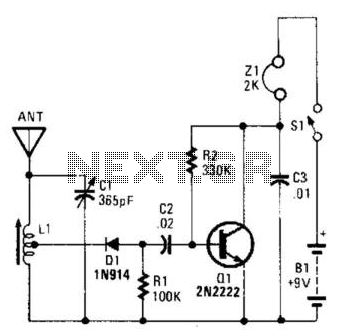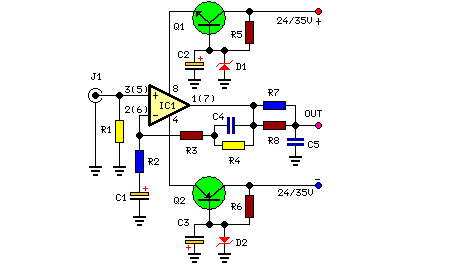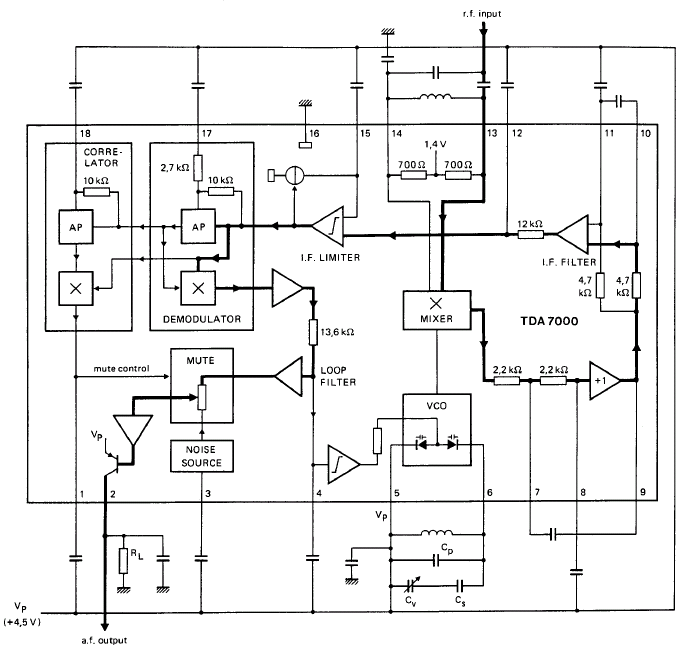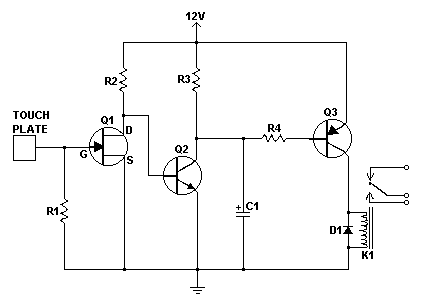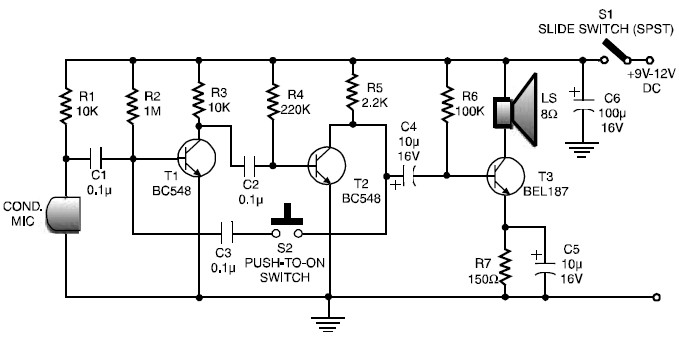
SUPER SIMPLE SHORTWAVE RECEIVER
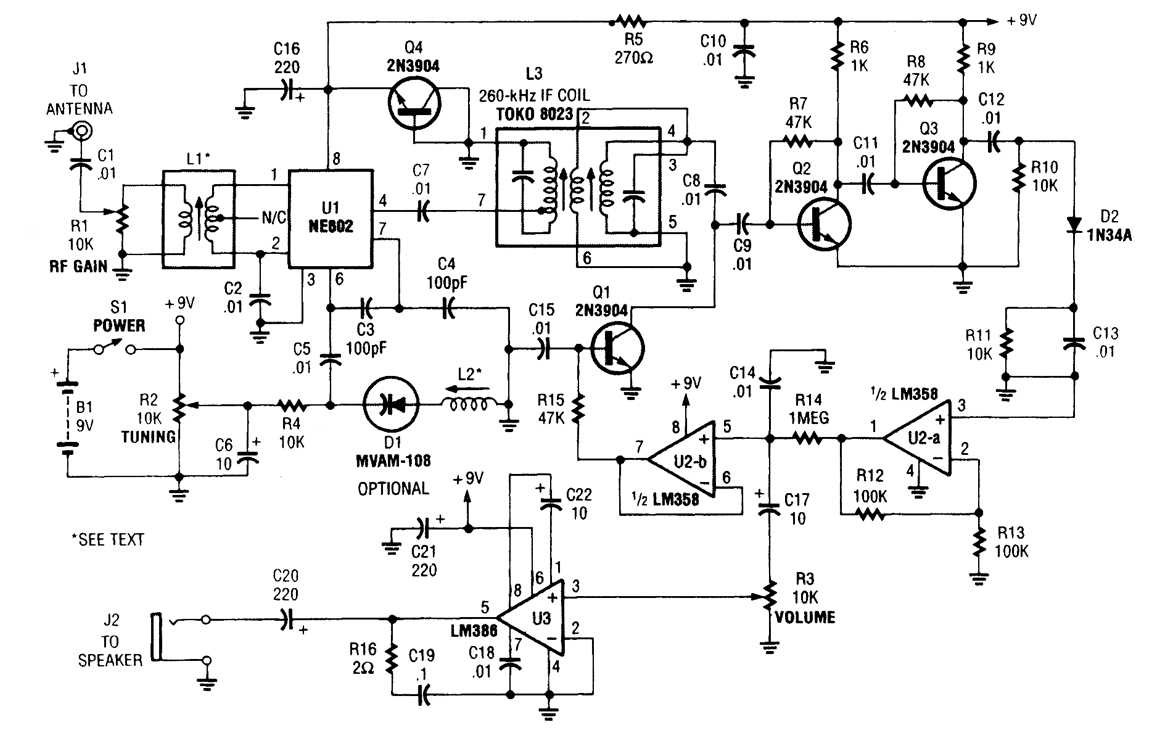
The integrated circuit U1, which is an NE602 double-balanced mixer, functions as both an oscillator and a frequency mixer. Signals received from the antenna input at J1 are transmitted through a DC-blocking capacitor C1 to the RF-gain control resistor R1, before being directed to the input pins 1 and 2 of U1. The local oscillator frequency, adjustable via the settings of resistor R2 and inductor L2, is mixed internally within the integrated circuit.
The NE602 double-balanced mixer is designed for use in various RF applications, providing effective signal processing capabilities. The circuit begins with the antenna input (J1), where RF signals are received. These signals pass through the DC-blocking capacitor (C1), which prevents any DC voltage from affecting the subsequent stages of the circuit, ensuring that only the AC signal is processed.
The RF-gain control (R1) allows for the adjustment of the signal amplitude before it is fed into the mixer. This control is crucial for optimizing the performance of the mixer, as it can help prevent saturation and distortion of the output signal. The mixer itself, U1, combines the incoming RF signal with a local oscillator signal generated internally.
The local oscillator frequency is determined by the values of the resistor (R2) and inductor (L2). Adjusting these components allows for fine-tuning of the oscillator frequency, enabling the circuit to operate across a range of frequencies as required by the application. The internal mixing process results in the generation of intermediate frequencies (IF) that can be further processed or demodulated, depending on the application.
Overall, the NE602 mixer circuit is a versatile and essential component for RF signal processing, capable of handling a variety of signal types and frequencies while providing adjustable gain and frequency settings.Integrated circuit U1 (an NE602 double-balanced mixer) is a combination oscillator and frequency mixer. Signals from the antenna input (at J1) are fed through dc-blocking capacitor C1 to the RF-gain control, R1, and fed to the input of U1 at pins 1 and 2.The local-oscillator frequency, which varies with the settings of R2 and L2, is mixed internally within U..
🔗 External reference
The NE602 double-balanced mixer is designed for use in various RF applications, providing effective signal processing capabilities. The circuit begins with the antenna input (J1), where RF signals are received. These signals pass through the DC-blocking capacitor (C1), which prevents any DC voltage from affecting the subsequent stages of the circuit, ensuring that only the AC signal is processed.
The RF-gain control (R1) allows for the adjustment of the signal amplitude before it is fed into the mixer. This control is crucial for optimizing the performance of the mixer, as it can help prevent saturation and distortion of the output signal. The mixer itself, U1, combines the incoming RF signal with a local oscillator signal generated internally.
The local oscillator frequency is determined by the values of the resistor (R2) and inductor (L2). Adjusting these components allows for fine-tuning of the oscillator frequency, enabling the circuit to operate across a range of frequencies as required by the application. The internal mixing process results in the generation of intermediate frequencies (IF) that can be further processed or demodulated, depending on the application.
Overall, the NE602 mixer circuit is a versatile and essential component for RF signal processing, capable of handling a variety of signal types and frequencies while providing adjustable gain and frequency settings.Integrated circuit U1 (an NE602 double-balanced mixer) is a combination oscillator and frequency mixer. Signals from the antenna input (at J1) are fed through dc-blocking capacitor C1 to the RF-gain control, R1, and fed to the input of U1 at pins 1 and 2.The local-oscillator frequency, which varies with the settings of R2 and L2, is mixed internally within U..
🔗 External reference
